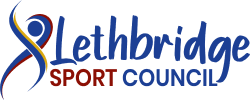Sampling vs. Early Specialization

The Canadian Sport for Life – Long Term Athlete Development Model identifies 10 key factors including ‘physical literacy’ and ‘specialization’. In ‘late specialization’ sports, physical literacy should be acquired before maturation and specialization.
Source - Canadian Sport for Life
Early Specialization is characterized by investing in one sport on a year round basis from a young age with the goal of developing expertise (Ericsson et al., 1993)
Sampling (also referred to as Early diversification) is engaging in a variety of sports during childhood. (Côté et al., 2007)
Benefits of Sport Sampling:
•Prevents over-use injuries
•Reduce the risk of burn-out
•Physical literacy as a result of multisport participation will optimize elite athlete development for those who choose high performance
•Promotes lifelong participants in sport, recreation and fitness activities
Research shows that although there are sports that require early specialization to reach the highest levels of competition, most sports, including hockey, soccer, basketball and baseball are late specialization sports. Experts suggest athletes in these sports should also play other sports until at least 14 years of age.
Source - Activeforlife.com
Did you know:
•Wayne Gretzky also played baseball, lacrosse and tennis until he was in his teens
•Steve Nash didn’t start playing basketball until he was 13 years old, as a child he played hockey and soccer
•Clara Hughes has won Olympic medals in both cycling and speed skating, and she didn’t start cycling until she was 17, speed skating at 16
•Mike Weir played hockey until he was a teenager
•Myriam Bédard participated in her first biathlon event at age 15
Posted January 13, 2016
